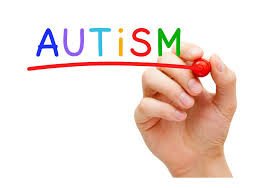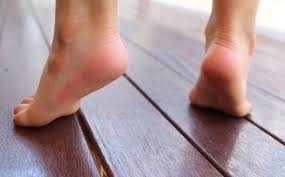Autism
Autism is a developmental disorder characterized by troubles with social interaction and communication. Often there is also restricted and repetitive behavior. Parents usually notice signs in the first two or three years of their child's life. These signs often develop gradually, though some children with autism reach their developmental milestones at a normal pace and then worsen.

Autistic individuals may have symptoms that are independent of the diagnosis, but that can affect the individual or the family. An estimated 0.5% to 10% of individuals with ASD show unusual abilities, ranging from splinter skills such as the memorization of trivia to the extraordinarily rare talents of prodigious autistic savants. Many individuals with ASD show superior skills in perception and attention, relative to the general population. Sensory abnormalities are found in over 90% of those with autism, and are considered core features by some, although there is no good evidence that sensory symptoms differentiate autism from other developmental disorders. Differences are greater for under-responsivity (for example, walking into things) than for over-responsivity (for example, distress from loud noises) or for sensation seeking (for example, rhythmic movements). An estimated 60%–80% of autistic people have motor signs that include poor muscle tone, poor motor planning, and toe walking, deficits in motor coordination are pervasive across ASD and are greater in autism proper.

Unusual eating behavior occurs in about three-quarters of children with ASD, to the extent that it was formerly a diagnostic indicator. Selectivity is the most common problem, although eating rituals and food refusal also occur does not appear to result in malnutrition. Although some children with autism also have gastrointestinal symptoms, there is a lack of published rigorous data to support the theory that children with autism have more or different gastrointestinal symptoms than usual; studies report conflicting results, and the relationship between gastrointestinal problems and ASD is unclear.

Parents of children with ASD have higher levels of stress. Siblings of children with ASD report greater admiration of and less conflict with the affected sibling than siblings of unaffected children and were similar to siblings of children with Down syndrome in these aspects of the sibling relationship. However, they reported lower levels of closeness and intimacy than siblings of children with Down syndrome; siblings of individuals with ASD have greater risk of negative well-being and poorer sibling relationships as adults.
Autism is caused by a combination of genetic and environmental factors.Risk factors include certain infections during pregnancy such as rubella as well as valprioc acid , alcohol or cocaine use during pregnancy. Controversies surround other proposed environmental causes for example the vaccine hypotheses, which have been disproven. Autism affects information processing in the brain by altering how nerve cells and their synapses connect and organize; how this occurs is not well understood. In the DSM V, autism is included within the autism spectrum (ASDs), along with Asperger syndrome which is less severe, and pervasive development disorder, otherwise not specified (PDD-NOS).
Early speech or behavioral interventions can help children with autism gain self-care, social, and communication skills.Although there is no known cure, there have been cases of children who recovered. Not many children with autism live independently after reaching adulthood, though some are successful. An autistic culture has developed, with some individuals seeking a cure and others believing autism should be accepted as a difference and not a disorder.
Globally, autism is estimated to affect 20.8 million people as of 2013. In the 2000s the number of people affected was estimated at 1–2 per 1,000 people worldwide. In the developed countries, about 1.2% of children are diagnosed with ASD as of 2015, a more than doubling from one in 130 in 1997 in the United States. It occurs four to five times more often in boys than girls. .